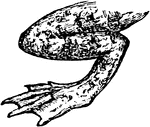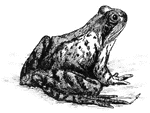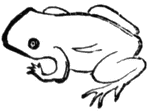Clipart tagged: ‘tadpole’

Development of Capillaries of a Tadpole
Development of capillaries in the regenerating tail of a tadpole. a b c d, sprouts and cords of protoplasm.

Development of Capillaries of a Tadpole
Development of capillaries in the regenerating tail of a tadpole. a b c d, sprouts and cords of protoplasm.…
Chilobranchus
A genus of fishes whose branchial apertures are close together below, and are surrounded by a lip-like…

Frog Egg
"The Tadpole is the larva of the anurous amphibia, sometimes so far extended as to include larvaæ…
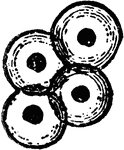
Frog Eggs
"The Tadpole is the larva of the anurous amphibia, sometimes so far extended as to include larvaæ…
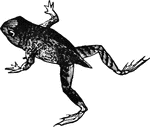
Frog with tail
Nearing the end of its development, a gradually shrinking tail is all that remains of the tadpole.
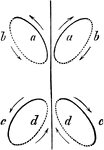
Ellipses of Swimming Frog
A diagram showing the motions a young frog makes while swimming. In this stage of life, the frog makes…

Loops of Swimming Frog
A diagram showing the motions a young frog makes whilst swimming. In this stage of the frog's life,…

Swim Lines of Frog
A diagram demonstrating the motion a frog makes whilst swimming. In this stage of the frog's life, the…

Tadpole
"The Tadpole is the larva of the anurous amphibia, sometimes so far extended as to include larvaæ…

Tadpole
"The Tadpole is the larva of the anurous amphibia, sometimes so far extended as to include larvaæ…
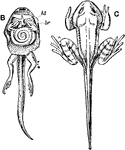
Inside and Outside View of Tadpole During Metamorphosis
The illustration is showing both inside and outside view of the tadpole. The left inside view shows…
Newly hatched tadpole
"Figure 5 shows the form of the tadpole when first hatched, which usually takes place about four weeks…
